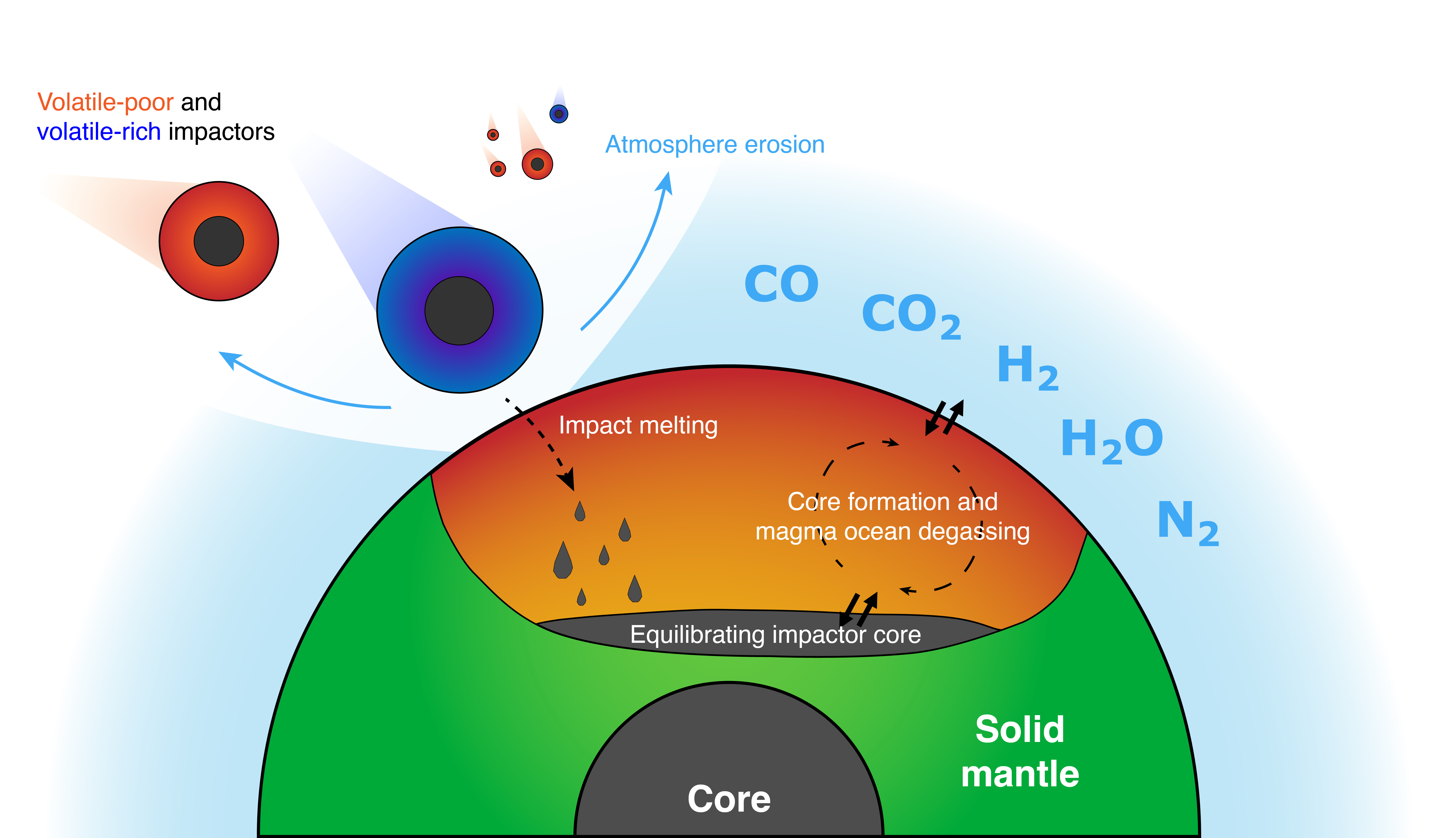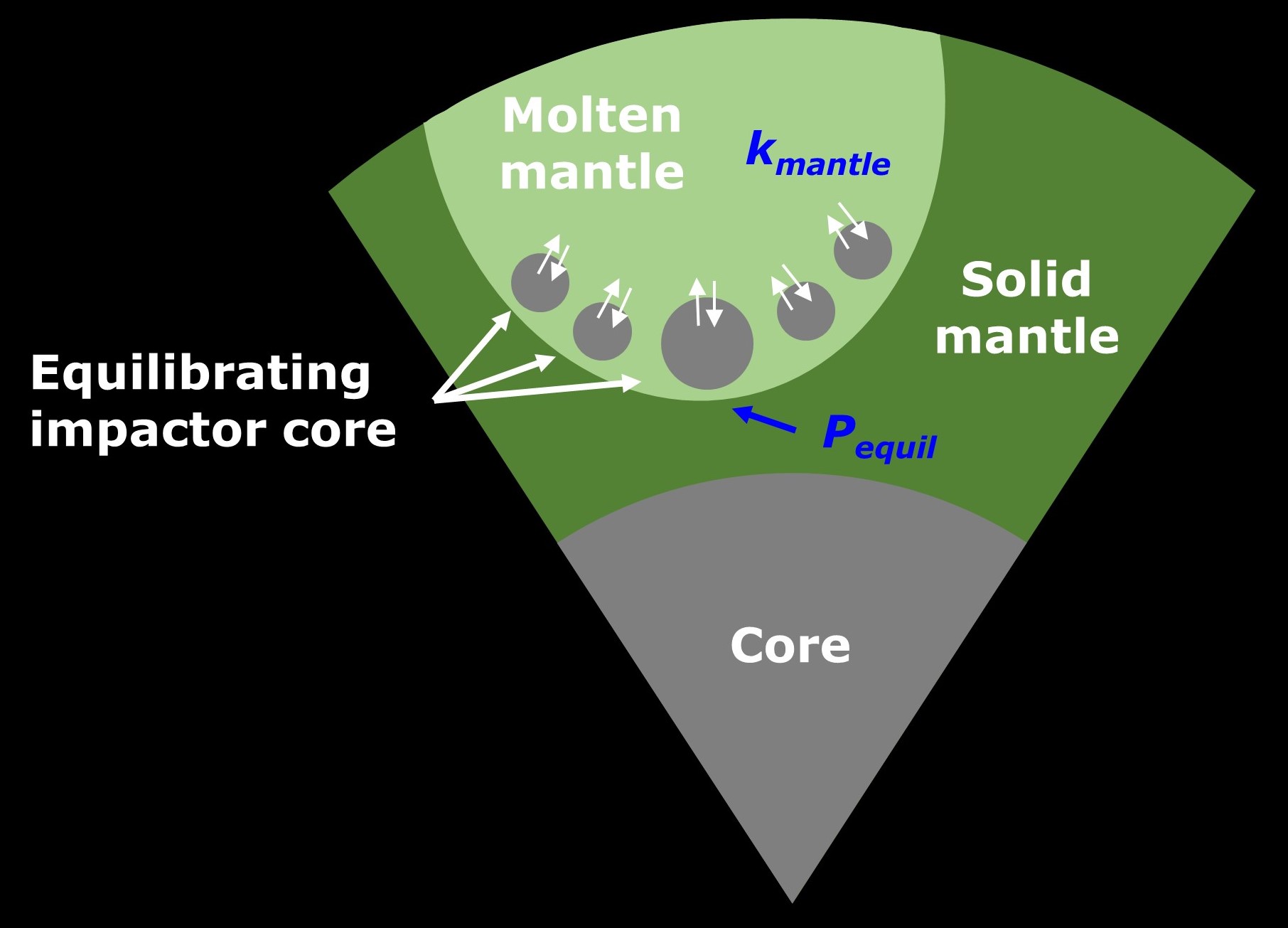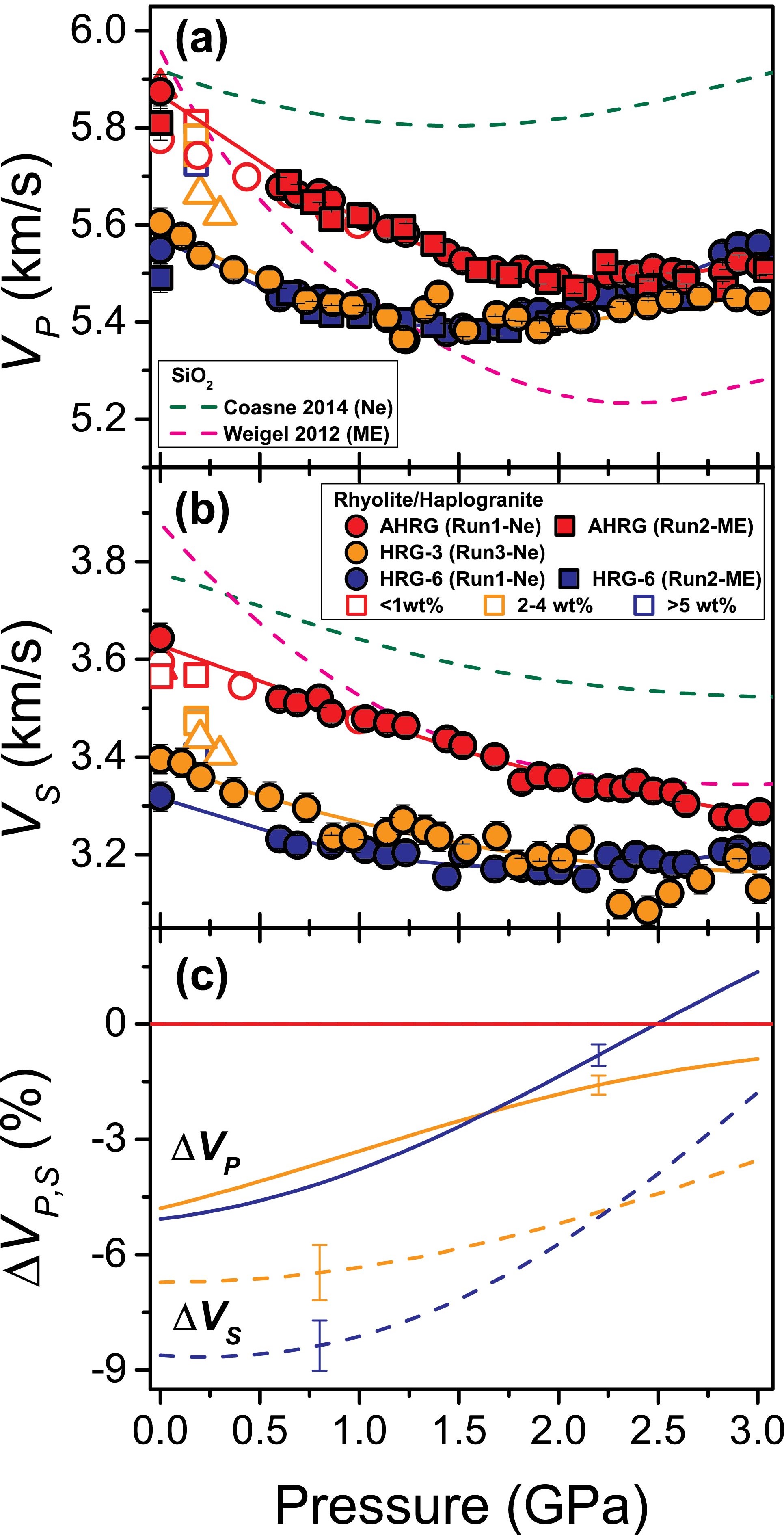

The distribution of key volatile species (H, C, and N) during Earth's formation is essential to understanding the availability of these elements at the surface early in Earth's history. We combine accretion histories, core formation, magma ocean-atmosphere interactions, and atmosphere erosion to model the distributions of H, C, and N between core, mantle, atmosphere, and loss to space during Earth's growth.

Earth formed from a series of impacts, but the nature of these impacts may have differed depending on which scenario of Solar System evolution Earth formed in. We found that the composition of Earth's core and mantle are not sensitive to Solar System formation scenario, but rather, the initial masses of bodies Earth grew from (Gu et al., 2023).

Glasses are commonly used as analogs of melts in Earth's interior. We used Brillouin Light Scattering to measure sound velocities (VP and VS) and FTIR spectroscopy to measure water concentrations in rhyolitic glasses as functions of pressure. We found that hydrous glasses become as incompressible as their anhydrous counterpart above ~1.5 GPa, causing their velocities to converge at high pressure. Our results provide some insights into the behavior of hydrous melts in felsic magma chambers at depth.
Figure: (a) Compressional wave velocities (VP), (b) shear wave velocities (VS), and (c) percent differences in velocity in anhydrous and hydrous rhyolitic glasses as functions of pressure (Gu et al., 2021).